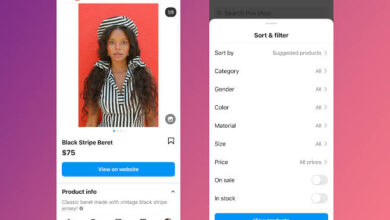10 Best Niches for Dropshipping in 2025

The world of online commerce is witnessing unprecedented growth, and dropshipping has emerged as one of the most accessible and profitable business models for aspiring entrepreneurs. With the global dropshipping market projected to reach $464.4 billion in 2025, representing a staggering 22% growth from the previous year, there has never been a better time to explore the **best niches for dropshipping** and capitalize on this booming industry.
E-commerce keeps growing fast, and dropshipping is one of the easiest ways to start selling online without holding any inventory. If you want to succeed, picking the best niches for dropshipping is super important. A niche is a focused market segment, and the right one can make your store stand out, attract loyal customers, and earn higher profits.
2025 is special because new trends like eco-friendly products, home office gear, and smart tech are booming. Consumer habits evolve all the time, so knowing which niches have hot demand right now can help you launch a dropshipping business that lasts.
In this article, you’ll learn about the top 10 best dropshipping niches for 2025, why choosing the right niche matters, and tips to succeed in each area. Whether you’re new or experienced, this guide will help you pick a niche where you can grow and make real profits.
Why Niche Selection is Crucial for Dropshipping Success
Before diving into the specific niches that will dominate 2025, it’s essential to understand why choosing the right niche is the cornerstone of dropshipping success. Many beginners make the mistake of trying to sell everything to everyone, but this approach rarely leads to sustainable profits or long-term success.
Reduced Competition: When you focus on a specific niche, you’re not competing with every other dropshipper in the market. Instead, you’re targeting a particular segment of customers with unique needs and preferences. This focused approach allows you to stand out in a crowded marketplace and position yourself as an expert in your chosen field. For example, instead of selling generic fitness equipment, you might focus specifically on yoga accessories or home gym equipment for small spaces, immediately reducing your competition and making your marketing efforts more effective.
Targeted Marketing: A well-defined niche makes it exponentially easier to reach the right customers. When you know exactly who you’re selling to, you can create targeted advertising campaigns, develop content that speaks directly to their pain points, and choose marketing channels where your audience is most active. This precision not only reduces your marketing costs but also increases conversion rates, as your message resonates more strongly with potential customers who see your products as solutions to their specific problems.
Higher Profit Margins: Specialized niches often command higher prices because customers are willing to pay more for products that meet their specific needs. When you’re not competing solely on price with thousands of other generic sellers, you can focus on value proposition, quality, and customer service. This differentiation allows you to maintain healthier profit margins and build a more sustainable business model.
Easier Brand Building: Building a brand around a specific niche is much more manageable than trying to establish authority across multiple categories. When you focus on one area, you can develop deep expertise, create valuable content, and build trust with your audience. This expertise becomes a competitive advantage that’s difficult for generic sellers to replicate.
Better Customer Service: Understanding your niche deeply allows you to provide superior customer service. You’ll know the common questions customers have, understand their concerns, and be able to provide knowledgeable support. This expertise builds trust and encourages repeat purchases, which are crucial for long-term profitability.
Read Next: The Most In-Demand Digital Skills in 2025
Key Factors to Consider When Choosing a Dropshipping Niche
Selecting the right niche requires careful consideration of multiple factors that will determine your success in the competitive dropshipping landscape. Here are the essential elements to evaluate when making your decision.
High Demand & Growing Trends: The first question to ask is whether the market is expanding or contracting. Look for niches with consistent demand and positive growth trajectories. Use tools like Google Trends, market research reports, and social media analytics to identify rising consumer interest. The global market should be large enough to support multiple businesses, but not so mature that growth has stagnated.
Profitability: While high demand is important, profitability is what sustains your business. Look for niches where you can maintain healthy profit margins, typically 20-50% or higher. Avoid niches dominated by price competition or where consumers are only looking for the cheapest options. Instead, focus on areas where customers value quality, convenience, or specialized features over price alone.
Low Competition: While some competition indicates a healthy market, you want to avoid oversaturated niches where established players dominate. Look for underserved segments within larger markets or emerging trends that haven’t yet been fully exploited. This might mean focusing on a specific demographic, geographic area, or unique product variation.
Passion/Interest: While not absolutely necessary, having genuine interest in your niche makes the journey more enjoyable and sustainable. When you’re passionate about your products, it shows in your marketing, customer service, and content creation. This authenticity resonates with customers and can be a significant competitive advantage.
Problem-Solving Products: The most successful dropshipping niches center around products that address specific problems or pain points. Customers are more likely to purchase and pay premium prices for solutions that make their lives easier, more comfortable, or more enjoyable. Look for niches where products provide clear value and tangible benefits.
Easy to Ship/Handle: Consider the practical aspects of your products. Items that are fragile, extremely heavy, or have complex shipping requirements can create operational challenges and reduce profitability. Focus on products that are relatively lightweight, durable, and easy to package and ship internationally.
Good Supplier Availability: Ensure you can find reliable suppliers for your chosen niche. Multiple supplier options provide security and negotiating power, while exclusive partnerships can offer competitive advantages. Research supplier reliability, shipping times, and quality control measures before committing to a niche.
Marketing Potential: Consider whether your niche offers good opportunities for content creation, social media marketing, and customer engagement. Some niches lend themselves better to visual marketing, while others work well with educational content or influencer partnerships. Choose a niche where you can effectively reach and engage your target audience.
The 10 Best Niches for Dropshipping in 2025
Armed with understanding of what makes a niche successful, let’s explore the ten most promising opportunities for dropshipping success in 2025. Each of these niches has been selected based on market trends, consumer demand, and profit potential.
Niche 1: Sustainable & Eco-Friendly Products
Why it’s Hot for 2025: Environmental consciousness has reached a tipping point, with consumers increasingly making purchasing decisions based on sustainability. Studies show that 80% of consumers are willing to pay more for eco-friendly products, and this trend is accelerating as climate change concerns intensify. The global market for sustainable products is growing 2.7 times faster than conventional alternatives.
Target Audience: This niche primarily appeals to environmentally conscious individuals, particularly millennials and Gen Z consumers who prioritize sustainability in their purchasing decisions. These customers are typically educated, urban or suburban, and willing to pay premium prices for products that align with their values.
Potential Products: The range of sustainable products is vast and growing. Popular items include reusable water bottles and coffee cups, bamboo kitchenware and utensils, solar-powered gadgets and chargers, organic clothing and accessories, zero-waste personal care items, biodegradable phone cases, and eco-friendly cleaning supplies. These products often feature natural materials, minimal packaging, and ethical manufacturing processes.
Marketing Tips: Focus your marketing on the environmental benefits and impact of your products. Use storytelling to connect with customers’ values and highlight certifications from recognized sustainability organizations. Visual content showing the environmental impact of traditional products versus your eco-friendly alternatives can be highly effective. Partner with environmental influencers and create educational content about sustainability.
Things to Watch Out For: The biggest challenge in this niche is avoiding greenwashing – making false or misleading claims about environmental benefits. Ensure your products genuinely meet sustainability standards and be transparent about their environmental impact. Also, be prepared for potentially longer shipping times from eco-friendly suppliers and higher product costs that may impact margins.
Read Next: What Makes a Website Privacy-compliant in 2025?
Niche 2: Home Office & Remote Work Essentials
Why it’s Hot for 2025: The permanent shift to remote and hybrid work has created sustained demand for home office equipment and productivity tools. With 77% of employees reporting higher productivity with well-designed remote workspaces[5], and companies continuing to embrace flexible work arrangements, this market shows no signs of slowing down.
Target Audience: Remote workers, freelancers, digital nomads, and students make up the primary market. This audience values productivity, comfort, and professional appearance in their home workspace. They’re typically tech-savvy, willing to invest in quality equipment, and often purchase multiple complementary products.
Potential Products: The home office niche offers numerous profitable product categories. Top-selling items include ergonomic chairs and standing desks, monitor stands and laptop accessories, desk organizers and storage solutions, webcams and lighting equipment, noise-canceling headphones, smart home devices for offices, and portable workstation accessories. These products focus on improving comfort, productivity, and professional presentation.
Marketing Tips: Emphasize the productivity and health benefits of your products. Use before-and-after visuals showing workspace transformations, and create content about ergonomics and productivity optimization. Target your advertising to remote work communities and professional networking platforms. Consider bundling complementary products for higher order values.
Things to Watch Out For: This niche is becoming increasingly competitive, with established office furniture companies entering the market. Focus on quality control, especially for electronics and ergonomic products, as poor quality can lead to negative reviews and returns. Also, be aware of the seasonal nature of some purchases, with spikes at the beginning of the year and when people return to work.
Niche 3: Health & Wellness Gadgets (Smart & Personalized)
Why it’s Hot for 2025: The health and wellness industry is projected to reach $7 trillion by 2025, driven by increased focus on preventative care, personal health monitoring, and technological integration. Consumers are taking more control of their health and seeking smart solutions that provide data and insights.
Target Audience: Health enthusiasts, fitness buffs, seniors interested in health monitoring, and anyone looking to improve their well-being. This audience is typically willing to invest in products that promise better health outcomes and are interested in tracking and quantifying their progress.
Potential Products: Smart health gadgets offer excellent profit potential. Popular items include smart scales with body composition analysis, sleep trackers and smart mattresses, posture correctors and ergonomic accessories, massage guns and recovery tools, air purifiers and UV sanitizers, fitness trackers and smartwatches, and meditation and stress relief devices. These products combine technology with health benefits.
Marketing Tips: Highlight the data and insights these products provide, emphasizing personal improvement and health optimization. Use testimonials and before-and-after stories to demonstrate results. Create educational content about health and wellness topics related to your products. Partner with health and fitness influencers for credibility.
Things to Watch Out For: This niche requires careful attention to product certifications and safety standards. Avoid making medical claims about your products, as this can lead to legal issues. Focus on wellness and lifestyle benefits rather than medical treatments. Also, be prepared for potential regulatory requirements depending on your target markets.
Niche 4: Pet Care & Smart Pet Accessories
Why it’s Hot for 2025: The pet industry continues to boom, with pet ownership at all-time highs and owners increasingly willing to spend on premium products. The market reached $147 billion in 2023, with projections for continued growth. Pet owners are treating their animals as family members, leading to increased spending on health, comfort, and entertainment.
Target Audience: Pet owners, particularly dog and cat owners, represent a passionate and loyal customer base. These customers are emotionally invested in their pets’ wellbeing and happiness, making them willing to try new products and pay premium prices for quality items.
Potential Products: The pet accessories market offers diverse opportunities. Top-selling products include smart feeders and water dispensers, GPS trackers and activity monitors, interactive toys and puzzle feeders, grooming tools and cleaning supplies, specialized beds and comfort items, organic treats and supplements, and pet safety equipment. Smart technology integration is particularly popular.
Marketing Tips: Focus on the emotional bond between pets and owners in your marketing. Use cute and engaging visuals of pets using your products, and encourage user-generated content from satisfied customers. Partner with pet influencers and veterinarians for credibility. Create educational content about pet care and wellness.
Things to Watch Out For: Product safety is paramount in this niche, as poor quality products can harm animals. Ensure all products meet safety standards and are appropriate for the intended pet size and species. Be prepared for strong competition from established pet brands and focus on unique features or superior quality to differentiate your products.
Read Next: How to Create a Brand Kit Using Canva AI
Niche 5: Niche Hobbies & DIY Kits
Why it’s Hot for 2025: As people seek creative outlets and stress relief, the DIY market has experienced significant growth. The global arts and crafts market is projected to reach $74.27 billion by 2033, driven by social media sharing, desire for personalization, and increased time spent at home.
Target Audience: Hobbyists, crafters, people looking for new skills, and gift-givers seeking unique presents. This audience values creativity, learning, and the satisfaction of making something with their hands. They’re often willing to try new crafts and purchase supplies regularly.
Potential Products: DIY kits offer excellent profit margins and customer satisfaction. Popular categories include candle making and soap crafting kits, pottery and ceramics sets, embroidery and cross-stitch projects, model building and woodworking kits, art supplies and painting sets, jewelry making supplies, and urban gardening kits. These products often include all necessary materials and instructions.
Marketing Tips: Showcase the finished products and the creative process in your marketing. Use time-lapse videos of project completion and before-and-after transformations. Emphasize the relaxation and stress-relief benefits of crafting. Create tutorials and educational content to build community around your brand.
Things to Watch Out For: Sourcing unique components for kits can be challenging, and inventory management requires careful planning to ensure all kit components are available. Consider the complexity of instructions and provide clear, easy-to-follow guidance. Be prepared for seasonal fluctuations, with higher demand during holidays and gift-giving seasons.
Niche 6: Personalized Gifts & Custom Products
Why it’s Hot for 2025: The demand for personalized products continues to grow as consumers seek unique items that reflect their personality or serve as meaningful gifts. The customization trend is driven by social media sharing, desire for individuality, and the emotional value of personalized items.
Target Audience: Gift-givers looking for unique presents, individuals seeking personalized items for themselves, and people celebrating special occasions. This audience values uniqueness and emotional connection, making them willing to pay premium prices for customized products.
Potential Products: Personalized products offer high profit margins and customer loyalty. Popular items include custom phone cases with photos or designs, personalized jewelry with names or dates, engraved items like watches or keychains, custom apparel with personal messages, personalized home decor items, and custom photo albums or prints. These products combine functionality with emotional appeal.
Marketing Tips: Use emotional appeal in your marketing, focusing on special occasions and the thoughtfulness of personalized gifts. Create mock-ups showing how products look with customization, and use customer testimonials emphasizing the emotional impact of receiving personalized items. Target your advertising around gift-giving seasons and special occasions.
Things to Watch Out For: Production time for personalized items can be longer than standard products, so set clear expectations with customers. Quality control for customization is crucial, as errors can’t be easily corrected. Managing returns and exchanges for personalized items can be challenging, so have clear policies in place.
Niche 7: Outdoor & Adventure Gear (Compact & Portable)
Why it’s Hot for 2025: Renewed interest in outdoor activities, camping, and travel has driven demand for portable adventure gear. The outdoor equipment market is projected to reach $27.96 billion in 2025, with growth driven by increased outdoor participation and demand for lightweight, multifunctional equipment.
Target Audience: Campers, hikers, travelers, and outdoor enthusiasts who value portability and functionality. This audience is typically active, environmentally conscious, and willing to invest in quality gear that enhances their outdoor experiences.
Potential Products: Compact outdoor gear offers excellent profit potential. Popular items include portable camping stoves and cookware, lightweight tents and sleeping gear, compact backpacks and travel accessories, portable water purification systems, solar-powered camping devices, multi-tool and survival gear, and compact furniture for outdoor use. These products emphasize portability and functionality.
Marketing Tips: Use lifestyle imagery showcasing products in outdoor settings, and emphasize durability and ease of transport. Create content about outdoor adventures and camping tips. Partner with outdoor influencers and adventure bloggers. Focus on the space-saving and weight-reducing benefits of your products.
Things to Watch Out For: This niche can be seasonal, with peak demand during warmer months and outdoor activity seasons. Ensure products are tested for durability and weather resistance. Be prepared for potential shipping challenges for outdoor gear and consider the import regulations for certain types of outdoor equipment.
Read Next: 5 Ways to Earn from Instagram as a Small Creator
Niche 8: Smart Home Devices & Automation
Why it’s Hot for 2025: The smart home market is experiencing explosive growth as consumers seek convenience, energy savings, and enhanced security. The increasing adoption of IoT devices and voice assistants is driving demand for home automation solutions.
Target Audience: Homeowners, tech enthusiasts, and people looking for convenience and energy savings. This audience typically has disposable income and is interested in technology that simplifies their lives or provides cost savings over time.
Potential Products: Smart home devices offer high profit margins and recurring sales opportunities. Popular categories include smart lighting systems and switches, smart plugs and outlets, security cameras and doorbells, smart thermostats and climate control, voice assistants and hubs, and automated blinds and window treatments. These products focus on convenience and efficiency.
Marketing Tips: Highlight the convenience, energy savings, and security benefits of smart home devices. Use demonstrations showing how products work and integrate with existing systems. Create educational content about home automation and energy efficiency. Target homeowners and tech enthusiasts through relevant channels.
Things to Watch Out For: Technical compatibility issues can be challenging, as customers may have different smart home ecosystems. Provide clear compatibility information and technical support. Be prepared for rapid technological changes that may make products obsolete quickly. Consider the complexity of installation and setup for some smart home devices.
Niche 9: Niche Apparel & Accessories
Why it’s Hot for 2025: The fashion industry is becoming increasingly segmented, with consumers seeking unique styles that reflect their identity and community affiliations. Niche apparel allows for higher margins and more targeted marketing compared to generic fashion items.
Target Audience: Specific subcultures (goth, cottagecore, vintage enthusiasts), specialized sports communities (pickleball, rock climbing), and individuals seeking unique fashion statements. These audiences are passionate about their interests and willing to pay premium prices for authentic, quality items.
Potential Products: Niche apparel offers excellent profit potential through specialization. Popular categories include vintage-inspired clothing and accessories, specialized sportswear for emerging sports, graphic tees with niche interests, unique jewelry and accessories, subcultural fashion items, and limited edition or exclusive designs. These products appeal to specific communities and interests.
Marketing Tips: Use social media platforms like TikTok and Instagram to reach niche communities. Collaborate with influencers who are authentic members of your target subculture. Build community around your brand through social media groups and user-generated content. Focus on the authenticity and uniqueness of your products.
Things to Watch Out For: Sizing issues can be problematic with apparel, leading to returns and customer dissatisfaction. Stay current with micro-trends, as niche fashion can change quickly. Be prepared for seasonal fluctuations and the need to constantly refresh your product offerings to maintain customer interest.
Niche 10: Educational Toys & STEM Kits for Kids
Why it’s Hot for 2025: Parents are increasingly prioritizing educational play and STEM learning for their children. The growing awareness of screen time concerns and the benefits of hands-on learning has driven demand for educational toys and STEM kits.
Target Audience: Parents, grandparents, and educators who value educational development and want to provide children with engaging learning experiences. This audience is typically willing to invest in quality educational products that promise skill development and learning outcomes.
Potential Products: Educational toys and STEM kits offer excellent profit margins and repeat purchase potential. Popular categories include robotics and coding kits, science experiment sets, building and construction toys, math and logic games, art and creativity kits, and geography and nature exploration tools. These products combine fun with educational value.
Marketing Tips: Emphasize the learning benefits and skill development aspects of your products. Use demonstrations showing children engaged and learning with your products. Create educational content for parents about child development and learning. Target parents through parenting blogs, social media groups, and educational websites.
Things to Watch Out For: Safety standards are crucial for children’s products, with strict regulations and testing requirements. Ensure age-appropriate design and clear age recommendations. Be prepared for strong competition from established educational toy brands and focus on unique features or superior educational value to differentiate your products.
General Tips for Dropshipping Success in 2025
Success in dropshipping requires more than just choosing the right niche. Here are essential strategies that will help you build a thriving business in 2025, regardless of your chosen market.
Focus on Customer Experience: In an increasingly competitive marketplace, exceptional customer service is what sets successful dropshippers apart. Respond quickly to inquiries, provide detailed product information, and go above and beyond to resolve any issues. Consider implementing live chat support, creating comprehensive FAQ sections, and providing multiple communication channels. Remember that satisfied customers become repeat customers and brand advocates.
Strong Marketing Strategy: Develop a multi-channel marketing approach that combines social media marketing, search engine optimization, and paid advertising. Create valuable content that educates and engages your audience, build an email list for direct communication, and leverage user-generated content to build trust. Stay current with platform algorithms and emerging marketing trends to maintain visibility.
Read Next: How to Create a Short Video Marketing Strategy for Local Businesses
Build a Brand: Don’t just be another generic dropshipping store. Create a strong brand identity with consistent messaging, visual design, and customer experience. Develop a unique value proposition that differentiates you from competitors. Build trust through professional website design, clear policies, and transparent communication about shipping times and product quality.
Reliable Suppliers: Your suppliers are crucial partners in your success. Establish relationships with multiple suppliers to ensure reliability and backup options. Regularly evaluate supplier performance, including shipping times, product quality, and communication responsiveness. Consider working with suppliers who offer private labeling or exclusive products to differentiate your offerings.
Continuous Learning & Adaptation: The dropshipping landscape evolves rapidly, with new platforms, tools, and strategies emerging regularly. Stay informed about industry trends, platform updates, and consumer behavior changes. Continuously test and optimize your processes, from product selection to marketing strategies. Be prepared to adapt quickly to market changes and emerging opportunities.
Conclusion
Choosing the right niche is the first step to dropshipping success in 2025. The niches we explored, like eco-friendly products, remote work essentials, and smart home devices, are all growing fast and filled with eager customers.
Finding a niche with demand, less competition, and good profit potential will set you apart. Remember, making your store stand out with great service, smart marketing, and reliable suppliers is just as important as picking the right products.
If you’re ready to start, use these insights to choose your niche, research your market, and build a brand customers trust. Dropshipping is full of opportunities, 2025 could be your year to turn your idea into a thriving business.
Frequently Asked Questions
1. Is dropshipping still profitable in 2025?
Yes, dropshipping remains highly profitable in 2025, with the global market projected to reach $464.4 billion. However, success requires strategic niche selection, brand building, and exceptional customer service. The key is to focus on value creation rather than just price competition, and to choose niches with genuine demand and growth potential.
2. How much money do I need to start a dropshipping business?
You can start a dropshipping business with as little as $500-$1,000, covering essential expenses like website setup, initial marketing, and sample products. The low startup cost is one of dropshipping’s main advantages, as you don’t need to invest in inventory upfront. However, having a larger budget ($2,000-$5,000) allows for better marketing and faster growth.
3. What are the biggest challenges in dropshipping, and how can I overcome them?
The main challenges include intense competition, thin profit margins, supplier reliability issues, and customer service complexities. Overcome these by focusing on niche markets, building a strong brand, establishing relationships with multiple reliable suppliers, and investing in excellent customer service. Quality control and clear communication about shipping times are also crucial.
4. How do I choose between multiple promising niches?
Evaluate each niche based on market demand, competition level, profit potential, and your personal interest or expertise. Consider factors like supplier availability, marketing opportunities, and long-term growth potential. Start with one niche and expand gradually rather than trying to tackle multiple niches simultaneously. Choose a niche where you can add genuine value and differentiate yourself from competitors.




